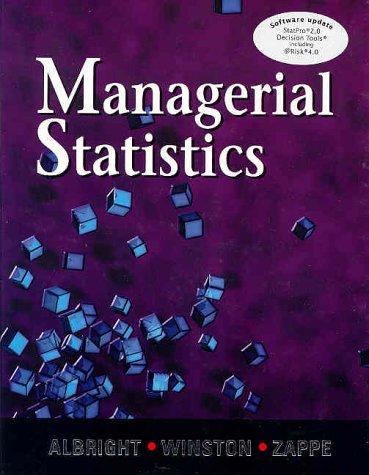Continuing the previous problem, one of the leading quality gurus, Genichi Taguchi of Japan, suggested the idea
Question:
Continuing the previous problem, one of the leading quality gurus, Genichi Taguchi of Japan, suggested the idea of a quadratic loss function when judging quality. Rather than saying that a part is “good” when its measurement falls within specification limits and is “bad” otherwise, the quadratic loss function estimates the part’s quality as (x — T)2, where x is the part’s measurement and 7 is the target measurement.
a. Using this loss function, estimate the average quality of parts from process 1, given the data in the file P11_66.XLS and a target of 10.50 inches. Do the same for process 2. Which process appears to be better?
b. Explain intuitively why a quadratic loss function might be preferable to a simple 0-1 function (where a part either meets specifications or it doesn’t) when assessing quality.
Data from in previous problem
Are all “capable” processes the same? Consider the data in the file P11_66.XLS. The data come from two processes that produce the same type of part. These parts should be within the specification limits 10.45 inches to 10.55 inches, with a target of 10.50 inches. Are both processes capable of staying within the specification limits? If you were a manufacturer and had to select one of these processes as a supplier of parts, which would you choose? Why?
Step by Step Answer:

Managerial Statistics
ISBN: 9780534389314
1st Edition
Authors: S. Christian Albright, Wayne L. Winston, Christopher Zappe





